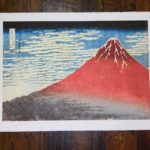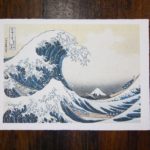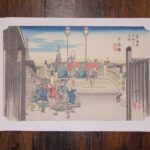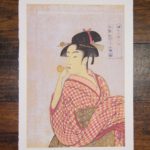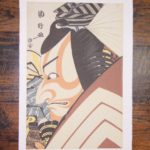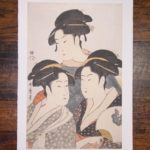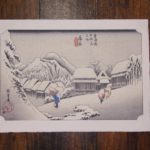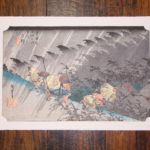Minobu, Minamikoma District, Yamanashi Prefecture, Japan
This article introduces Japanese Nishijima Washi, a craftsman who made calligraphy paper.
Washi is a type of paper made only in Japan. It uses Inawara fibers (rice straw stalks), manila hemp, bamboo, and other natural materials.
Nishijima Washi is made by dissolving the fibers in water, pouring them onto a screen called a “Suketa,” shaking it to strain the water through, and then flattening the fibers on the screen to a consistent thickness of 0.1 mm.
This technique is called “Tsuki.” Each sheet has a different look and texture because it is all handmade using naturally produced bark fibers.
These brilliant crafting techniques have been refined for over 500 years.
Nishijima is not too far from Tokyo, so if you visit Japan, I recommend you visit and see how they make traditional Japanese calligraphy paper.
Procedure to make Nishijima Washi
1. The paper artisans start by boiling various materials, including Inawara fibers (rice straw stalks), manila hemp, bamboo, and other natural materials.
2. The materials are then mixed in water. The amount of water used and the mixing speed depends on the day's humidity and temperature. A skillful touch is needed to create the perfect texture.
3. Next, the pulp is scooped out from the pulp slurry and put on a mesh tray to drain off the excess water. The remaining residue left on the filter is the Nishijima Washi. It may seem easy to level it out, but it is a skill that takes many years to master.
4. The finished papers are carefully laid on top of each other. When a stack has about 300 sheets, it is taken to be pressed to start the first drying process. After being pressed, it is hung out in the sun for upwards of a month to become completely dry. At the end of this process, the stack becomes half of what it originally was.
5. The sun-dried paper is then put back into the water to soak again. This starts the process of separating each sheet of paper from the stack, and once again, must be adjusted depending on the season and temperature. Only a skilled artisan can determine the best timing!
6. Each piece of paper is removed one at a time and placed upon a special hot iron board to dry. Because the wet paper is so easy to tear, even the most talented and experienced craftsman must be careful during this step.
7. A few minutes after being placed on the iron, the Nishijima Washi is finished and carefully laid out. It is now ready for final cutting, as needed, and distribution.
These traditional techniques continue to be practiced in Yamanashi Prefecture, preserving the tradition of crafting Washi.
Special Nishijima Washi Paper released
Collaboration between Traditional Japanese art Ukiyo-e and Nishijima washi.
The craftsman agreed to make a special washi paper just for Ukiyo-e prints.
Nishijima washi is usually made on calligraphy paper.
The thickness of the paper is just 0.1mm.
Special Nisijima Wahi for Ukiyo-e prints is a thickness of 1 mm.
It's ten times thicker than the calligraphy paper.
It has a rough texture and edges, resulting from the special-making process.
No two sheets are the same, making each piece of art one of a kind.
The Epson Ultra Chrome Pro ink used with the Washi paper holds its vibrant color for over 60 years.
It is made in Japan. High-quality fine Ukiyo-e works using traditional Japanese techniques.
It’s easy to display in any wooden frame. It's great for decorating in any private or professional setting and makes an excellent gift for a friend or family member.
If you are interested in these products, please contact us.
※Single sheet, Size: 29.7 x 42.0 cm (11.69 x 16.54 in)
About Ukiyoe
Ukiyoe is a painting that was established in woodblock prints during the Edo period and is one of the magnificent works of Japanese art.
Ukiyoe's "Ukiyo" originally meant "modern style," "pretty world," or "amenity."
It usually depicted everyday life in the Edo period, reflecting experiences, customs, fashion, and more.
Ukiyoe became "the world's UKIYOE" thanks to painters such as Van Gogh, Claude Monet, Edgar Degas, and Edouard Manet, their works with ukiyo-e motifs.
Do you need your original one?
If you want to make your favorite photo printed on this special Nishijima Washi!!
Please get in touch with us by email. We'll make your original one soon.
Minobu, Minamikoma District, Yamanashi Prefecture , Japan


